Are you ready to dive into the essential world of stakeholder communication? In this article, we'll explore the significance of crafting effective project briefing letters that keep everyone aligned and informed. Whether you're looking to enhance collaboration or ensure transparency, these templates will guide you in addressing your stakeholders with clarity and purpose. So, grab a seat, and let's unravel the art of writing a compelling stakeholder project briefing letter together!
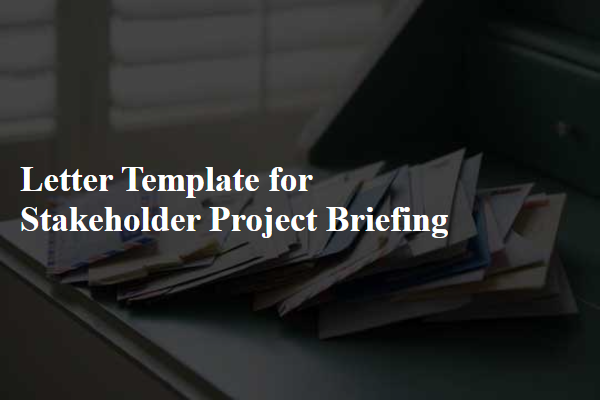
Objective and Purpose
Stakeholder project briefings aim to communicate key objectives and purposes clearly and effectively. These briefings typically outline specific goals for projects, ensuring stakeholders understand intended outcomes and benefits. Clarifying objectives can involve detailed exploration of project metrics, success criteria, and the alignment of project scope with organizational strategic goals. Demonstrating how these objectives support overall mission statements fosters transparency and engagement among stakeholders, enhancing collaborative efforts. Identifying purpose may include examining audience needs, addressing potential impacts, and outlining foreseeable challenges or opportunities tied to the project, ultimately fostering a shared vision for success.
Key Stakeholder Identification
Key stakeholder identification plays a critical role in project management, ensuring that all essential individuals and groups are recognized and engaged throughout the project lifecycle. Stakeholders can include project sponsors, such as executives from Fortune 500 companies, end-users, who may be employees of a specific organization or consumers of a product, regulatory bodies, such as government agencies overseeing compliance, and community members, who may be affected by the project's outcomes. An effective approach to identifying key stakeholders involves conducting stakeholder analysis, using tools like stakeholder mapping to visualize influence and interest levels, and then prioritizing these stakeholders based on their impact on the project. This helps establish clear communication channels, fosters collaboration, and ultimately drives project success.
Project Timeline and Milestones
The project timeline illustrates key phases and milestones of the development process for the new software application aimed at enhancing user experience. Important dates include the initial planning phase starting on January 15, 2024, followed by the design stage commencing on February 20, 2024, which includes the creation of wireframes and prototypes. The development phase is scheduled for March 15, 2024, focusing on coding and integration of features aimed at improving functionality. A critical milestone occurs on April 30, 2024, when the first phase of user testing will take place, allowing stakeholders to provide feedback. The final phase, deployment, is slated for June 15, 2024, marking the official launch of the application to the broader audience. Regular updates and progress reports will be provided bi-weekly to ensure alignment with stakeholder expectations and project goals.
Resource Allocation and Budget
Resource allocation plays a crucial role in project management, particularly for stakeholders involved in large initiatives such as infrastructure development or technology upgrades. A comprehensive budget, which often exceeds tens of thousands of dollars, defines the financial boundaries for various phases, including planning, implementation, and evaluation. Effective resource distribution includes personnel assignments, such as project managers and engineers, along with material resources like construction equipment or software licenses. Accurate forecasting is essential; studies suggest that projects with clear resource allocation strategies finish on time 30% more often. Regular communication with stakeholders, scheduled quarterly, ensures that budget adjustments align with project goals, minimizing financial discrepancies and maximizing efficiency.
Communication and Reporting Plan
Effective communication and reporting strategies are essential for project success within stakeholder relationships. The Communication Plan outlines key touchpoints, including weekly progress updates via email, bi-weekly in-person meetings at the project headquarters in San Francisco, and monthly performance reports detailing milestones achieved and challenges encountered. Target audience segmentation identifies primary stakeholders, including project sponsors, team members, and external partners, facilitating tailored information delivery. Additionally, the Reporting Plan specifies metrics for project performance assessment, such as budget adherence (keeping expenditure within 10% of the allocated $500,000), timeline accuracy (ensuring completion of tasks within scheduled deadlines), and stakeholder satisfaction (aiming for an 80% positive feedback rate in quarterly surveys). Emphasizing transparency and accountability fosters trust and engagement among all project stakeholders.
Letter Template For Stakeholder Project Briefing Samples
Letter template of stakeholder communication regarding project milestones
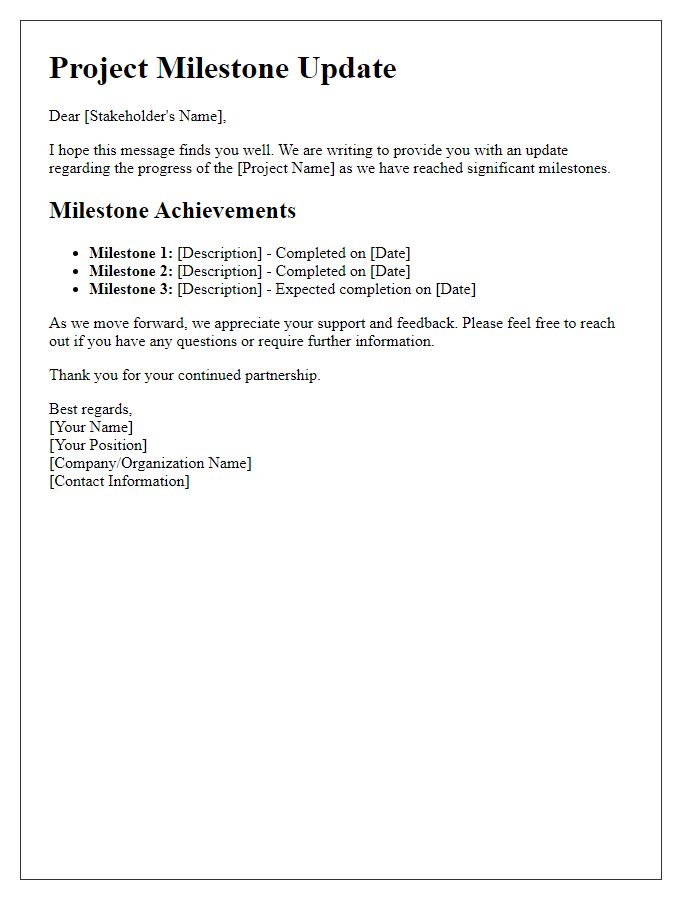

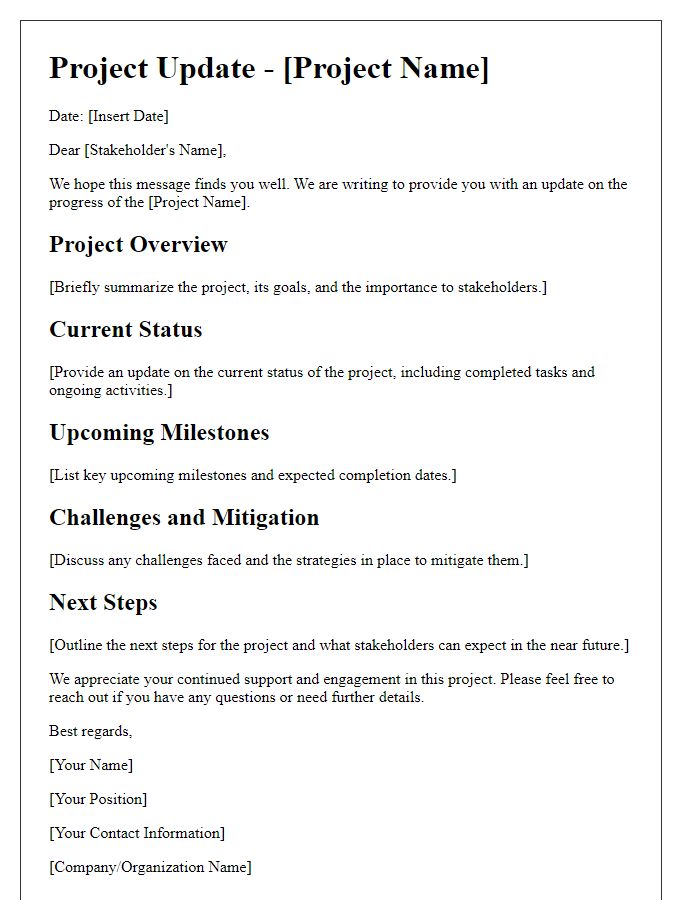
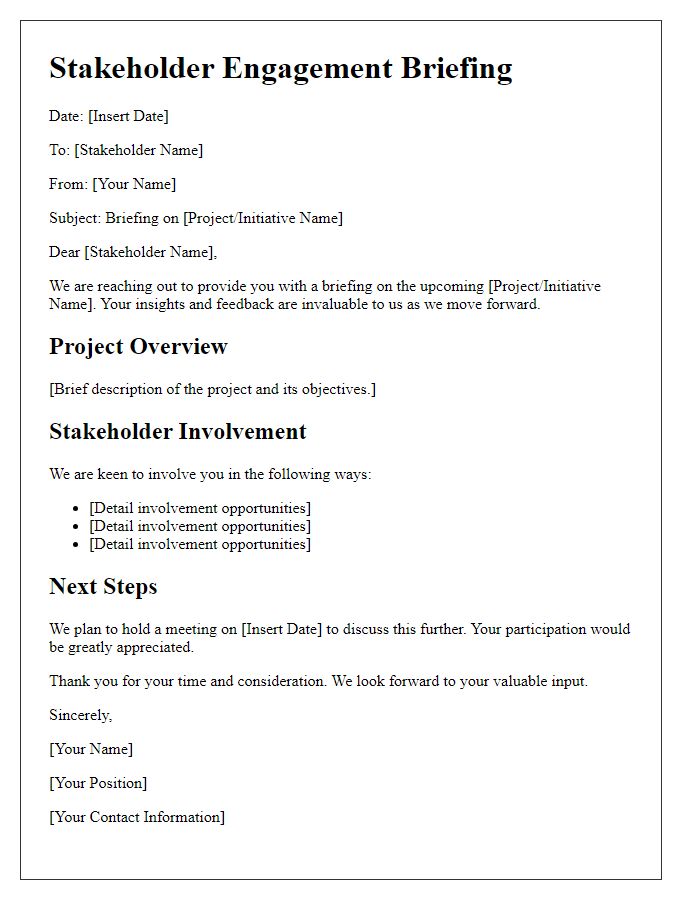
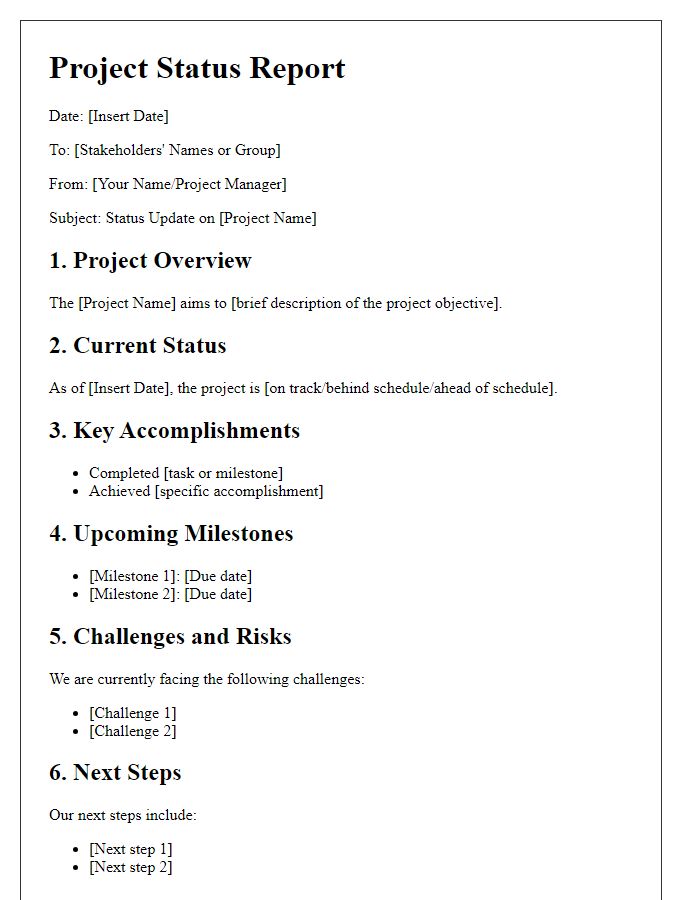
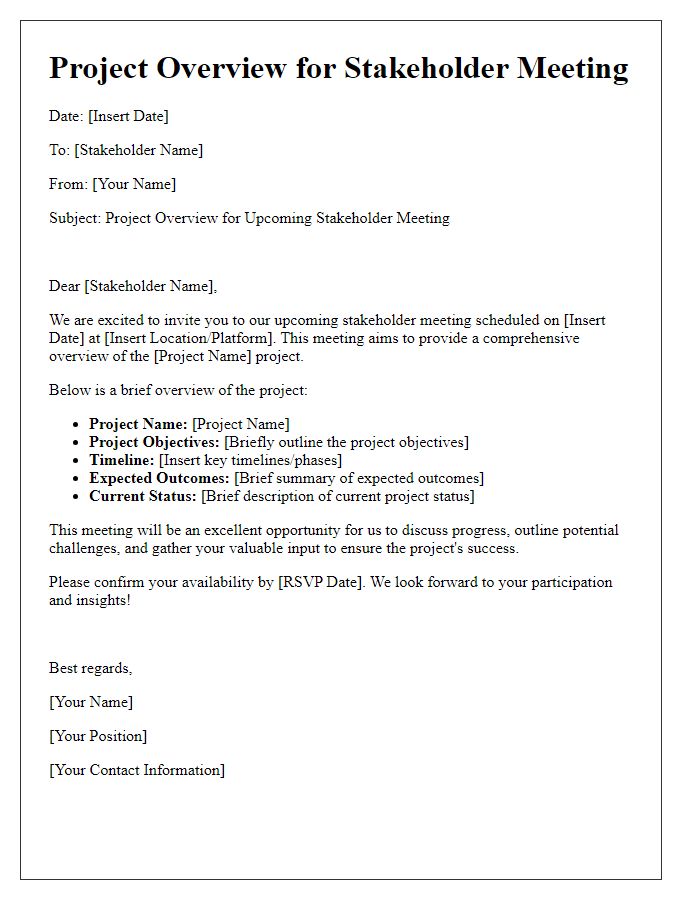
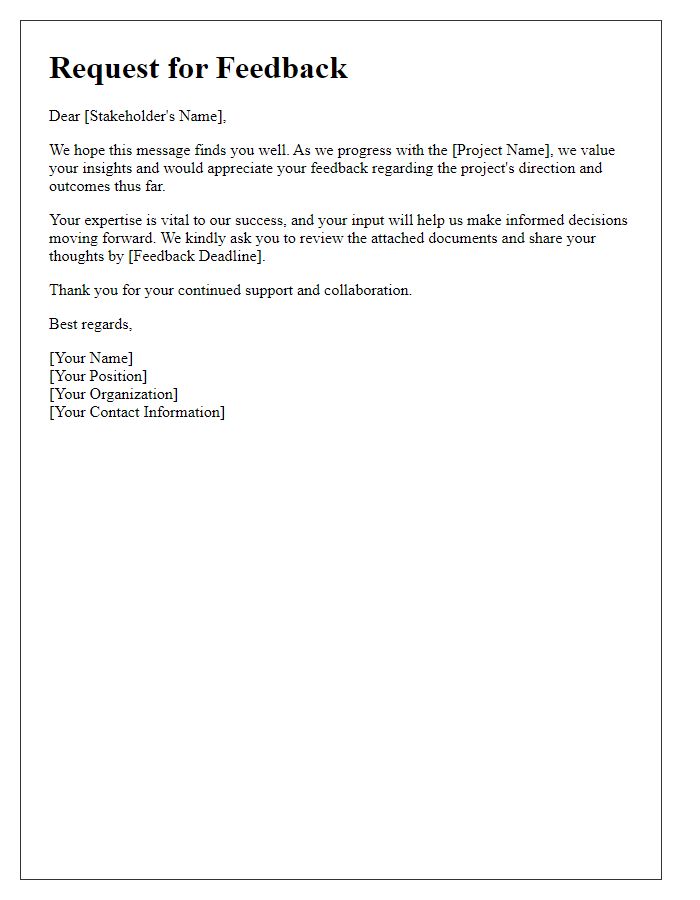
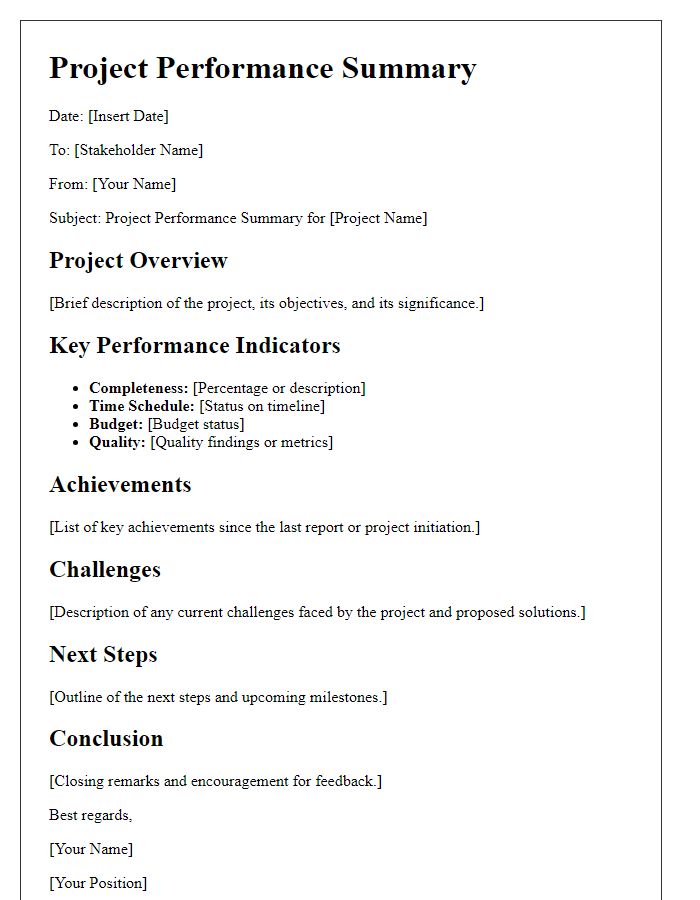
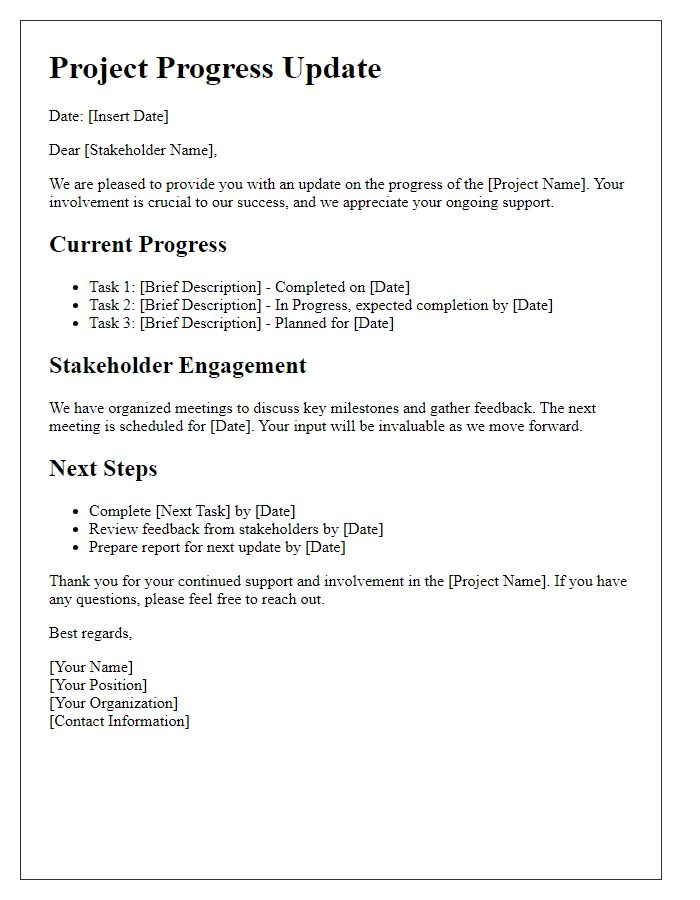
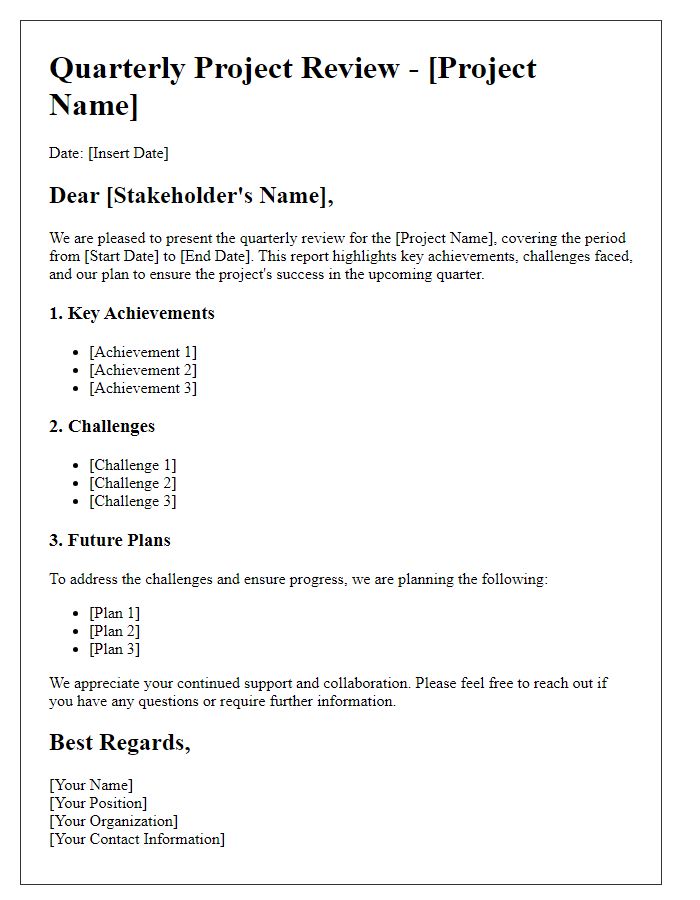
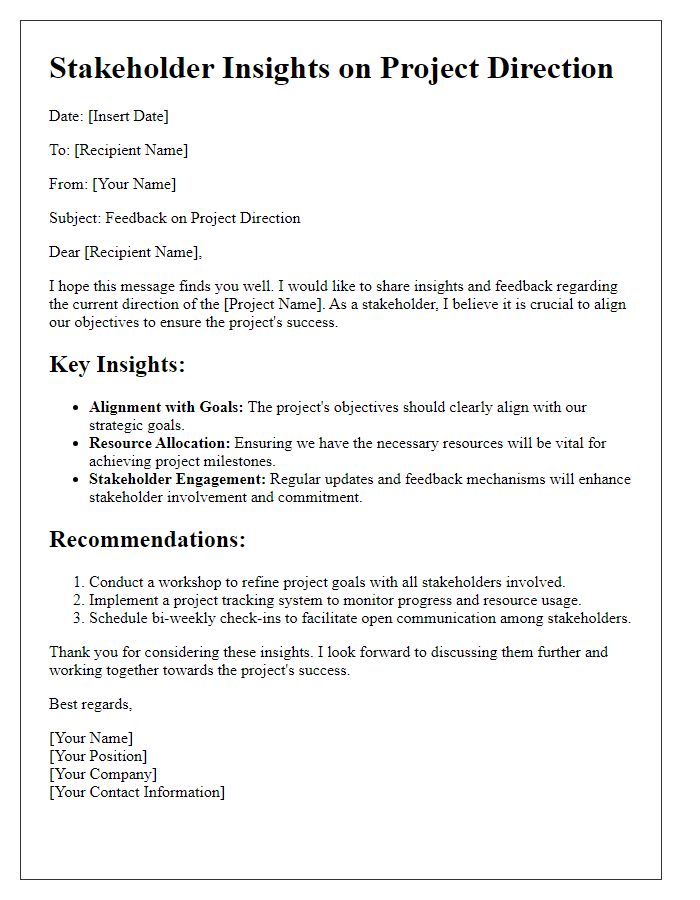

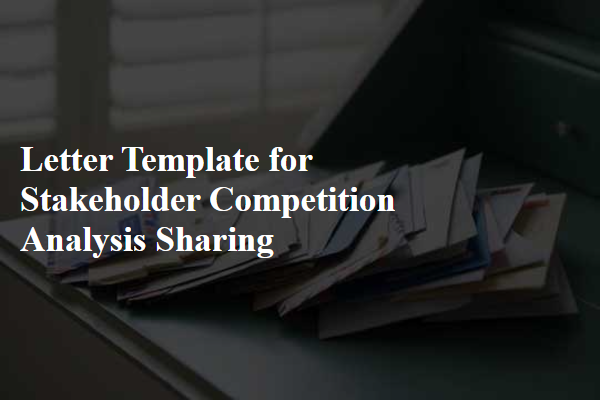
Comments